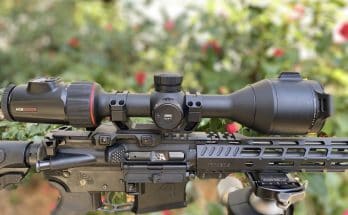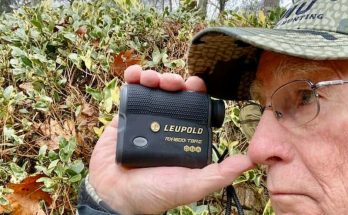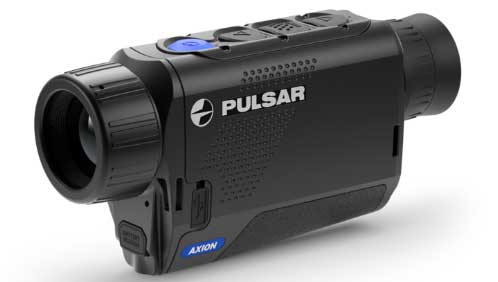
The new Pulsar Axion Thermal Monocular line of thermal monoculars is very compact and reasonably priced. This new series of Pulsar Thermal Monoculars is not intended to replace the popular Helion series, but add a new line of lightweight thermal scanners at a more affordable cost. Housings are made from lightweight magnesium alloy for high structural rigidity and ruggedness while retaining small weight and ergonomics.
UPDATE: Axion Price Drop for 2020
2020 UPDATE – Pulsar is making changes to the Axion line of thermal handheld scanners. The XM30 and XM38 have been replaced by the XM30S, which uses an improved Sony display screen for better image quality. Prices have also dropped for all the units. See current prices below as of February, 2020.
Pulsar has completed the firmware update to turn on the audio recording feature. Now the Axion and the new Pulsar Thermeon Rifle Scopes will record sound with the video. If you have an older model that does not record sound, follow this link to complete your firmware update.

Pulsar’s new Axion Thermal Monocular series is their latest offering for hand-held thermal scanning. The average hunter wants a thermal scanner that will do the job, but weight and size play a big role when selecting field gear. This is no subtle change. Pulsar has reduced the weight of this new thermal scanner to 8 oz and it is no larger than a range finder! I downsized my binoculars 20 years ago, from heavy 8×40’s to compacts and have never gone back. Because of the lightweight and compact size, the new Axion compact series of thermal scanners is the first place I would look when considering a thermal monocular. A large, heavy scanner is not an option for me.
The Axion line of thermal scanners is Pulsar’s entry-level thermal scanner and brings affordability to the hand-held thermal market without sacrificing quality and features. I want to provide you the key features of each model, so you can determine which would be better for your hunting needs.
Pulsar Axion Models & Features Compared
| Axion Key XM22 $1299.97 | Axion Key XM30 $1499.97 | Axion XM30S $1999. 97 | Axion XM38 $2199 .97 |
| 960×720 ICOS Display 320×240 Core 12 Microns 50hz Refresh Rate 1,039 yd Detection Range Li-Ion Battery Pack Magnification: 2-8x 8 Color Modes LCOS Display Long Detect Range 12 µm Thermal Imaging Sensor Rugged Magnesium Alloy Housing B-Pack Power Instant Start-up HD LCOS Display IPX7 Waterproof Rated 8 Color Modes White Hot / Black Hot No on-board storage -no pictures, recording | 960×720 ICOS Display 320×240 , 12 Micron Thermal Core 50hz Refresh Rate Up to 3 hr Battery Life Magnification: 2.5x-10x 1312 yd Detection Range No Video Recording/ No Stream Vision App Instant Start-up Li-Ion Battery Pack APS3 IPX7 Waterproof Rated Rechargeable Li-Ion Battery Pack APS3 No on-board storage -no pictures, recording | 1024×768 AMOLED Display 340×240, 12 Micron Thermal Core 50hz Refresh Rate Up to 3 hr Battery Life Magnification: 4.5x-18x 1312 yd Detection Range Built-in Video Recording/ Stream Vision App Instant Start-up Li-Ion Battery Pack APS3 IPX7 Waterproof Rated Rechargeable Li-Ion Battery Pack APS3 16GB of on-board storage for pictures and videos | 1024×768 AMOLED Display 320×240, 12 Micron Thermal Core 50hz Refresh Rate Up to 3 hr Battery Life Magnification: 5.5 x-22x 1859 yd Detection Range Built-in Video Recording/ Stream Vision App Instant Start-up Li-Ion Battery Pack APS3 IPX7 Waterproof Rated Rechargeable Li-Ion Battery Pack APS3 16GB of on-board storage for pictures and videos |
All of the Axion models share most of the same features, so what is different. Why should I buy the more expensive model if I do not care about recording? The big differences are highlighted in the table above, but as one famous politician once asked, “What difference does it really make?”
The short answer is that the XM30 and XM38 have recording capability and are compatible with the Stream Vision App. Also, the XM38 has a larger objective lens that gives you a better image. But there are more factors to consider such as the type of terrain you hunt and the species you hunt.
The Key model has a 960×720 ICOS (liquid crystal on silicon) display instead of the HD AMOLED (Active Matrix Organic Light Emitting Diode ) display used by the XM30 and XM38. While the LCOS is a very good display, the AMOLED is a newer technology used by more expensive optics. The Key model uses a little lower resolution, so the image may not appear as crisp and a little smaller. The Axion XM38 also has a slightly larger objective lens than the Key model or the standard XM30 which will add to the overall image quality.
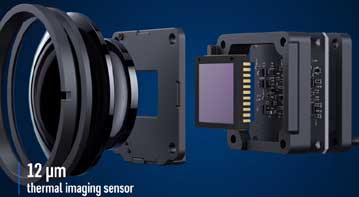
When it comes to performance, the thermal core is the most important factor of the optic. The Key model does have the same 320×240, 12-micron thermal core, and that is the most important part of the optic. I have not had a chance to compare all three models side by side, but reports I have seen say the AMOLED image is a little sharper and appears a little larger.
The High Definition AMOLED microdisplay of the XM30 and XM38 not only offers crisp images, but it also has an advantage in cold weather. The AMOLED display ensures excellent image quality and flawless performance even in freezing temperatures.
That smaller image of the Key model is not all due to the size and display type, but also because it has a lower base magnification than the other two models. The smaller display image and the lower magnification combine to limit this model to shorter ranges, but in hunting situations where your maximum view is limited to a couple of hundred yards, it may not be a disadvantage. When the terrain prevents your prey from being detected passed that couple of hundred yards anyway, you do not need the higher magnification or the very best resolution for target identification.
The magnification ranges of the models get progressively higher. Unless you are hunting vast open areas, those differences may not help much and could actually hamper your scanning at close ranges. Many hunters will be using these thermal scanners in conjunction with the new high-quality Digital Night Vision scopes like the Sightmark Wraith. These scopes have a more limited range, so a thermal monocular with very high magnification is not needed.
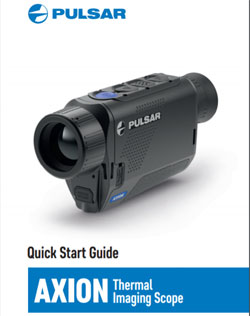
Axion Users Guide
In this world of Facebook and Youtube, many hunters want Night Optics with recording capability. Then there are those that could care less and those who already have recording capability in their thermal rifle scopes. Either way, Pulsar has you covered with the Axion. The Key model has no recording at a lower price, but the Axion XM30 and XM38 have recording capability with 16 gigs of storage. Plus these last two models can be used with the Stream Vision App to stream or download videos and photos. Stream Vision lets your hunting companion pair his smartphone to the Axion so he can see what you are seeing with the Axion.
If you have been sitting on the sideline while your hunting buddies are experiencing the thrill of night hunting, now is the time to make your move. The Pulsar Axion is the new generation of lightweight thermal scanners at a fraction of the price of most handheld thermal monoculars.
To purchase a new Pulsar Axion Thermal Monocular, visit Outdoor Legacy website or call Jason Robertson at (877)350-1818. Jason will take the time to help you decide what thermal scanner or other night vision optic you need for your hunting needs.
For the latest news about Night Vision Optics, subscribe to the most informative shows on Youtube, the Late Night Vision Show and HansETX. Hosts Jason Roberts and Joel Miller will keep you up to date on Night Vision Optics and entertain you with some great hunting videos. Below is their podcast about the Pulsar Axion Thermal Monoculars.
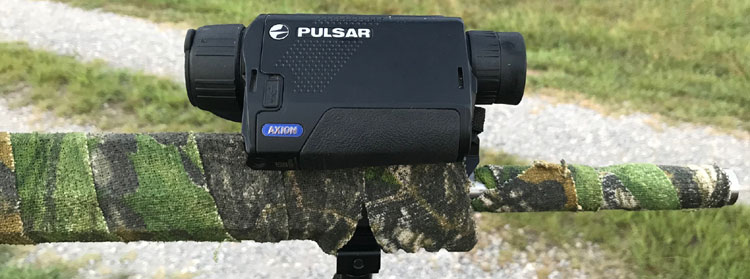
Jason at Outdoor Legacy was kind enough to let me review the Pulsar XM30. We did some image testing and a couple of successful hunts for hogs and coyotes. See that review at the Out Door Legacy Blog.


